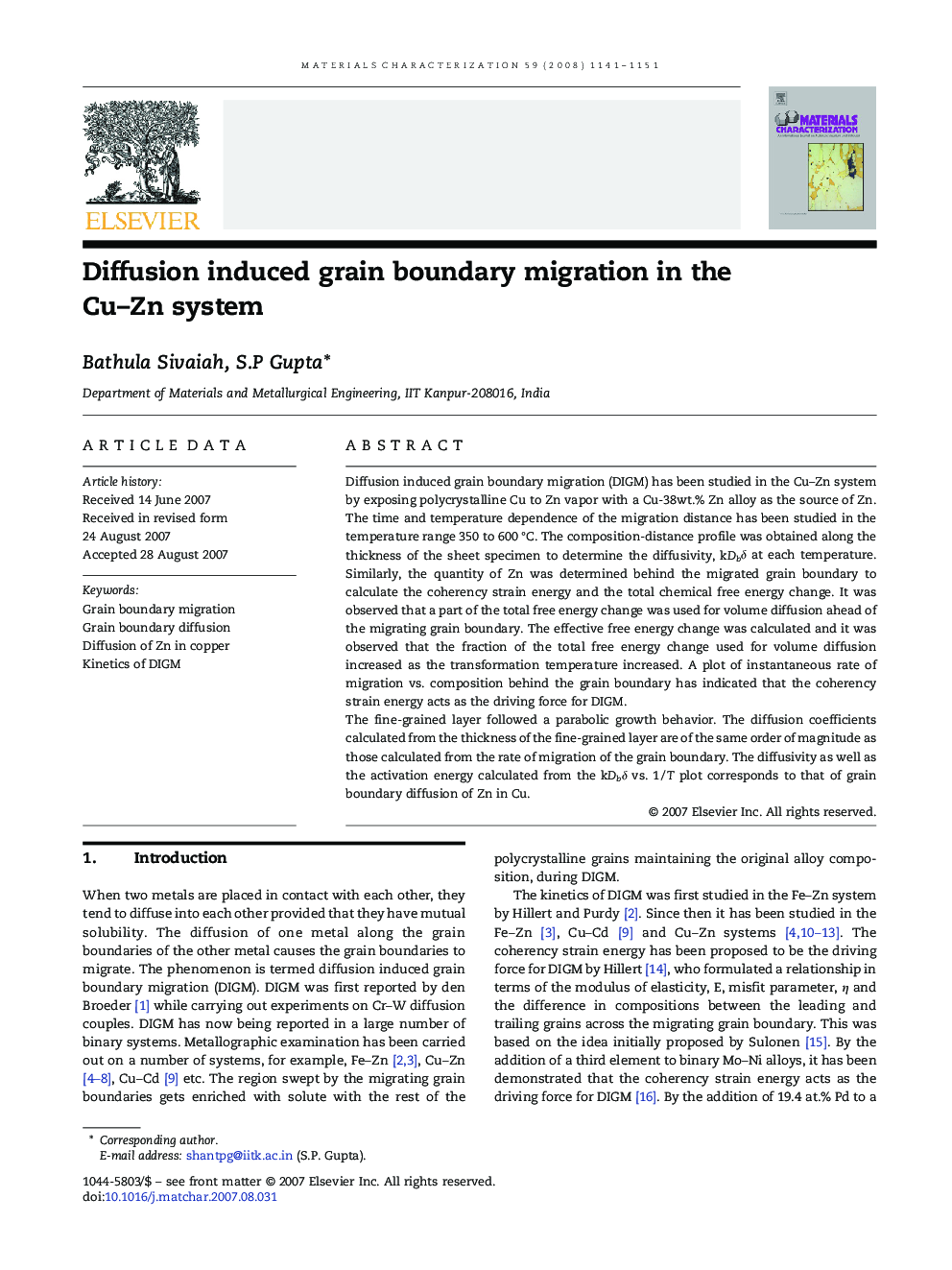| Article ID | Journal | Published Year | Pages | File Type |
|---|---|---|---|---|
| 1572748 | Materials Characterization | 2008 | 11 Pages |
Diffusion induced grain boundary migration (DIGM) has been studied in the Cu–Zn system by exposing polycrystalline Cu to Zn vapor with a Cu-38wt.% Zn alloy as the source of Zn. The time and temperature dependence of the migration distance has been studied in the temperature range 350 to 600 °C. The composition-distance profile was obtained along the thickness of the sheet specimen to determine the diffusivity, kDbδ at each temperature. Similarly, the quantity of Zn was determined behind the migrated grain boundary to calculate the coherency strain energy and the total chemical free energy change. It was observed that a part of the total free energy change was used for volume diffusion ahead of the migrating grain boundary. The effective free energy change was calculated and it was observed that the fraction of the total free energy change used for volume diffusion increased as the transformation temperature increased. A plot of instantaneous rate of migration vs. composition behind the grain boundary has indicated that the coherency strain energy acts as the driving force for DIGM.The fine-grained layer followed a parabolic growth behavior. The diffusion coefficients calculated from the thickness of the fine-grained layer are of the same order of magnitude as those calculated from the rate of migration of the grain boundary. The diffusivity as well as the activation energy calculated from the kDbδ vs. 1 / T plot corresponds to that of grain boundary diffusion of Zn in Cu.
